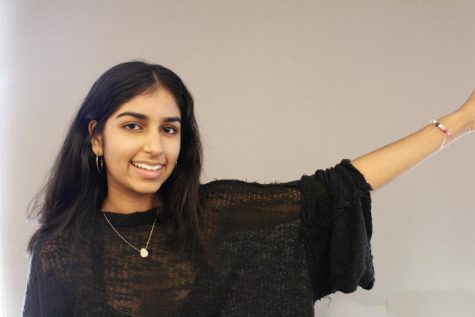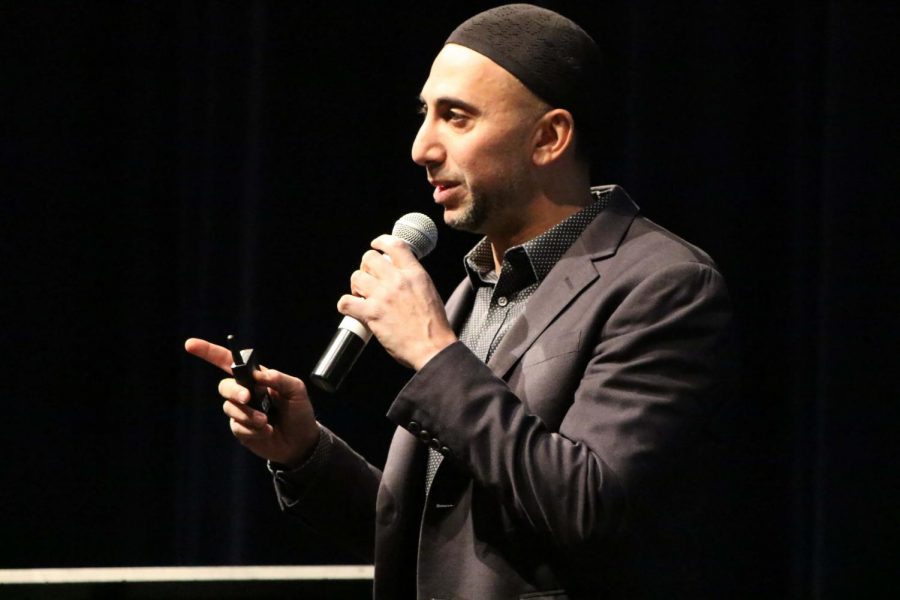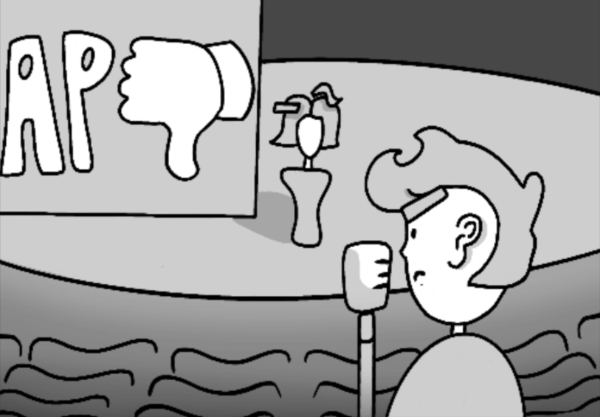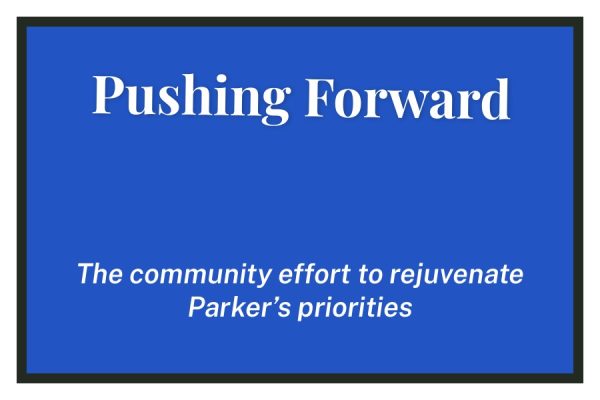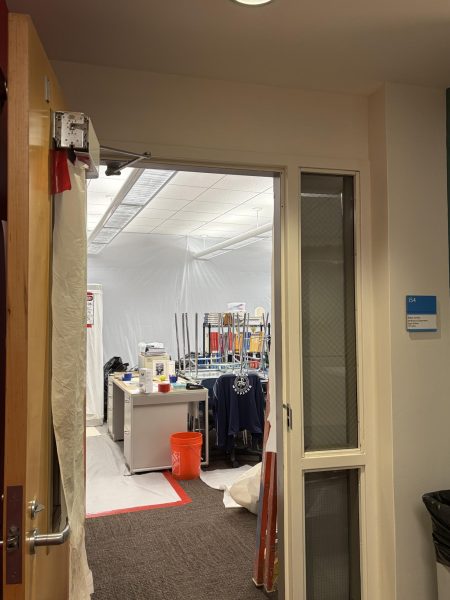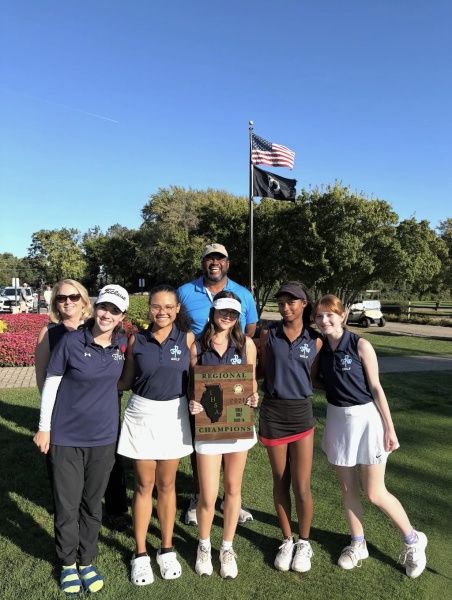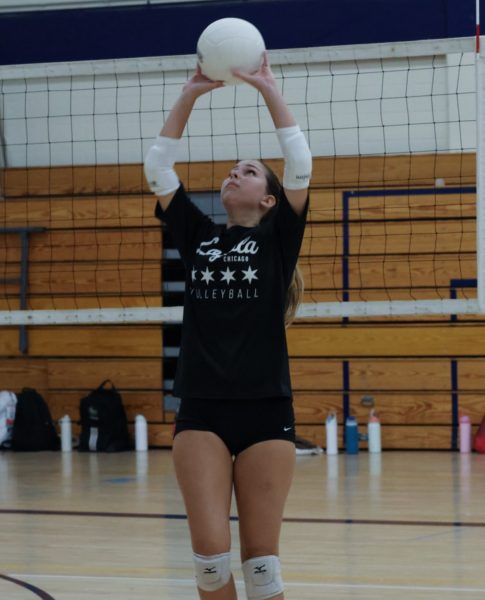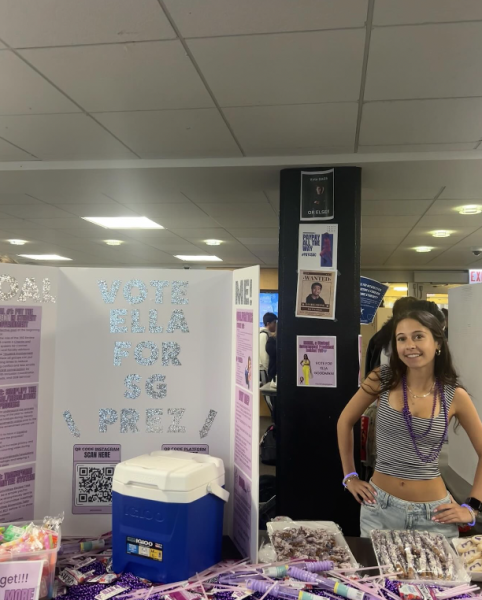Calling Out and Calling Up
Rami Nashashibi Speaks at Parker
Photo credit: Sarah Jayne Austin
Rami Nashashibi presents during Morning Ex about his work as an advocate for social reform in chicago.
Rami Nashashibi walked on to the stage of the Diane and David B. Heller Auditorium on Friday, December 6 to hearty applause. The activist and father of three–Jenah in seventh grade, Nia in fourth, and Adam in first–took the microphone with a smile and greeted the crowd with the standard Arabic greeting “As-salaam-alaikum,” which translates to “Peace be unto you.”
Nashashibi has spent the last two decades of his life working to confront problems of violence, poverty, and race through the Inner-City Muslim Action Network (IMAN). He founded IMAN, which also means “faith,” in 1997 in an attempt to challenge himself and others to do two things: “call out” and “call up” injustices. “Call out, as in identify and name them,” Nashashibi said, “and call up, as in thinking, ‘What does a better city, a better country, a better world look like? How do we get there?’”
Days before Nashashibi’s presentation at Parker, 23 year old orphan Steven Ward was shot and killed at a stoplight in Oak Park, a story which Nashashibi focused on throughout this talk. Ward came from a difficult background and had spent time in prison, but was thriving in one of IMAN’s programs. When reading the Chicago Tribune the day following Ward’s death, Nashashibi noticed a mention of the homicide in the form of a police report, with no mention of Ward, or of his family, or of his growth as a person.
Nashashibi realized that, if he had not known Ward, he would have read straight past the headline. “We don’t process stories of violence anymore,” Nashashibi said. “Seeing that headline made me realize what work we have to do to continue to call out these injustices and recognize the lives and stories of every single person like Ward.”
IMAN was born out of a mission to unify Muslims throughout Chicago. “There was a program being paid for by the city I was the supervisor of for a summer,” Nashashibi said. “I quickly realized we needed something beyond this program, so I started mobilizing and working with people across the South Side. I knew we needed an organization. The American-Muslim community was diverse, we had lots of experiences, resources, and history, but we were really separated from one another in terms of African Americans in one place, Arabs in another, South Asians in a third. So we grabbed people from all of these different communities to try to bring people together. Logistically that was the first vehicle that became a platform for IMAN.”
IMAN’s mission, according to its website, is “to serve as the model of the Muslim tradition of facilitating transformational change in urban communities, by inspiring others towards critical civic engagement exemplifying prophetic compassion in the work for social justice and human dignity beyond the barriers of religion, ethnicity, and nationality.” Nashashibi created IMAN while he was a college student in Chicago.
After his move to the United States as a teenager, Nashashibi began to experience xenophobia on his college campus, sparking a chain of events that would drive him into the world of activism and social justice.
“In my first year of school, I was on the far southwest side of the city, at St. Xavier college,” Nashashibi said. “At that point, I had made the last-minute decision to go there, and the diversity there was entirely comprised of the soccer team. Besides that, it was very white. It was the Gulf War, way before 9/11, but even at that point harmful terms I hadn’t heard before were being used against me, and I started becoming very aware of race and racism. Horrible things were sketched on my dorm room door, and I realized I had to get out of there.”
Nashashibi’s activist involvement began not long after, with his switch to DePaul University. “I became increasingly interested in these ideas of social justice, of disparities, of unevenness at DePaul, and I started organizing really heavy with the black and latinx students,” Nashashibi said. “We started creating a little trouble on campus. We shut down newspapers, we did sit-ins, just raising a little righteous hell, if you will. We were trying to call out the issues we saw, demanding change, demanding equity, and demanding attention for the students of color.”
Growing up, Nashashibi was not religious. In college, the time he spent with other activists, many of whom were Muslim, forced him to grapple with his religious identity. “Islam kept popping up in these little places, Muslim identity kept coming up, and I had to come to terms with the fact that I really knew nothing about it,” Nashashibi said. “I’d never studied or read the religion, walked into a mosque, or even opened up a Quran, and so it was a long journey. Eventually I found a lot of beauty in it, a lot of resilience and hope, and I’m still on a spiritual journey.”
Although Nashashibi has always been passionate about activism, and in particular the challenges and lack of opportunities for those in low-income neighborhoods, the process of integrating the Muslim community and other religious communities into his work developed on its own.
Nashashibi centered his Parker talk around a prime example of this–the story of a dangerous, boarded-up building, across the street from an elementary school, that was often used for drug deals. Partnered with a father down the street and a local rabbi, Nashashibi went to court with the hopes of changing the building and making the area safer for children. Muslims, Jews, and Christians from the area banded together to clean out the building and plant a tree.
At present, IMAN operates a number of programs similar to this one in order to strengthen the communities in which it works. A few of its most notable programs include a free community holistic health clinic, job training and transitional housing for formerly incarcerated men, youth leadership and civic engagement skills, and arts and cultural programming to inspire growth and change.
Nashashibi considers his biggest accomplishment and proudest moment to be IMAN’s involvement in the construction of the first memorial to Dr. King in the city of Chicago. “It was built in an effort that wasn’t some sort of big grandiose funding project,” he said. “It was really money raised by the community for the community, students engaged with their local high schools–it was really done in concert with people throughout the city. I was proud we led that effort because, again, it’s one thing to call out injustice, and another to again call up toward a vision that is the world as it could be.”
